Abstract
Modern clinical observations have greatly expanded the conception of the characteristics of the various kinds of epilepsy. By simultaneously recording electroencephalograms and the performance of simple motor tasks, it has been possible to demonstrate the effects of epileptic seizures not detectable by unaided observation and not noted by the patient. The effects of these subclinical seizures have been manifested variously—by a lengthening of the time between stimulus and reaction, by inaccuracies of response to stimuli, or by total cessation of performance.
From this study it is suggested that subclinical seizures probably play a role in producing some of the psychiatric conditions associated with the convulsive disorders, as well as primary behavior disturbances and undifferentiated mental deficiency. It is also suggested that such subclinical seizures may possibly contribute to the characteristics of some cases of criminality and antisocial reactions and schizophrenic reactions.
Full text
PDF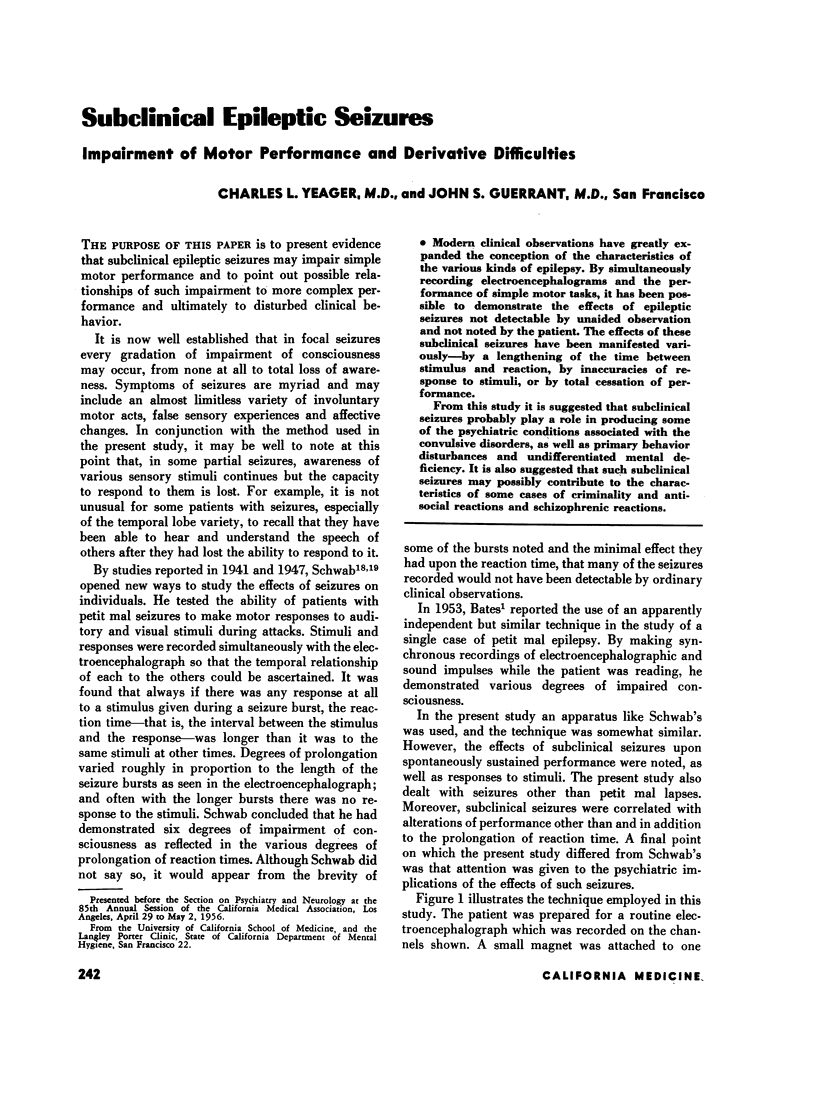
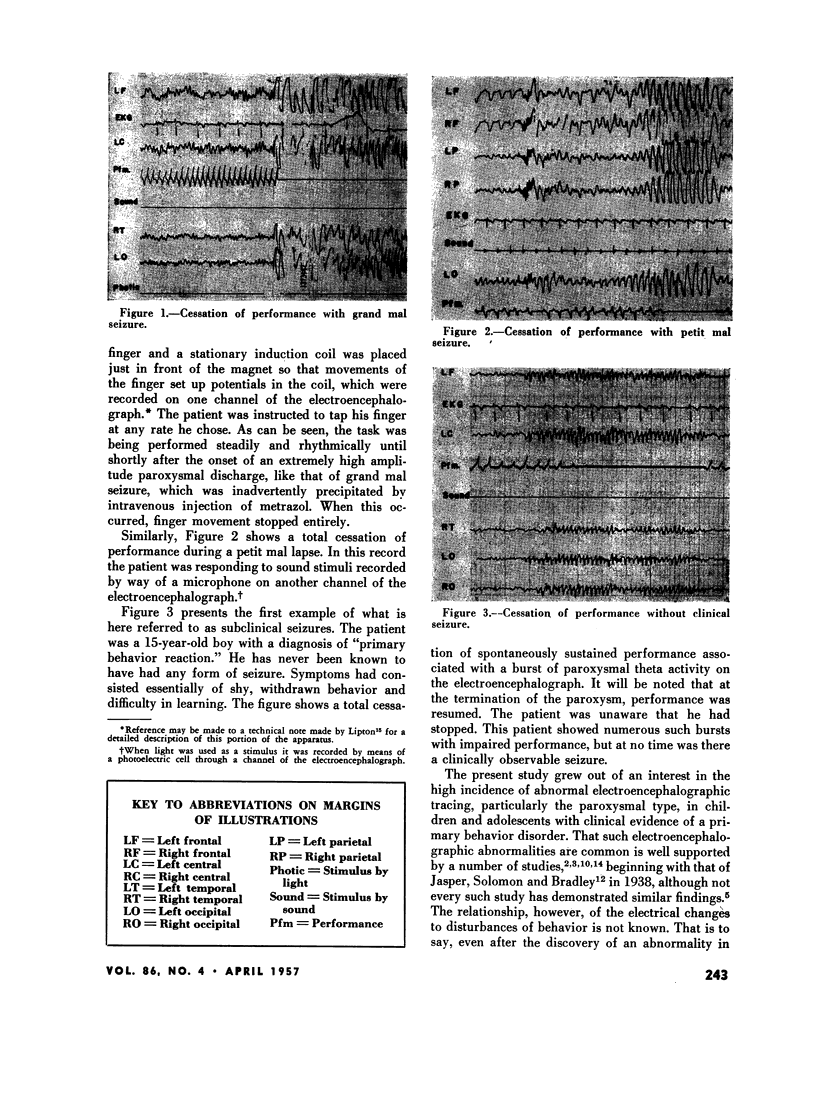
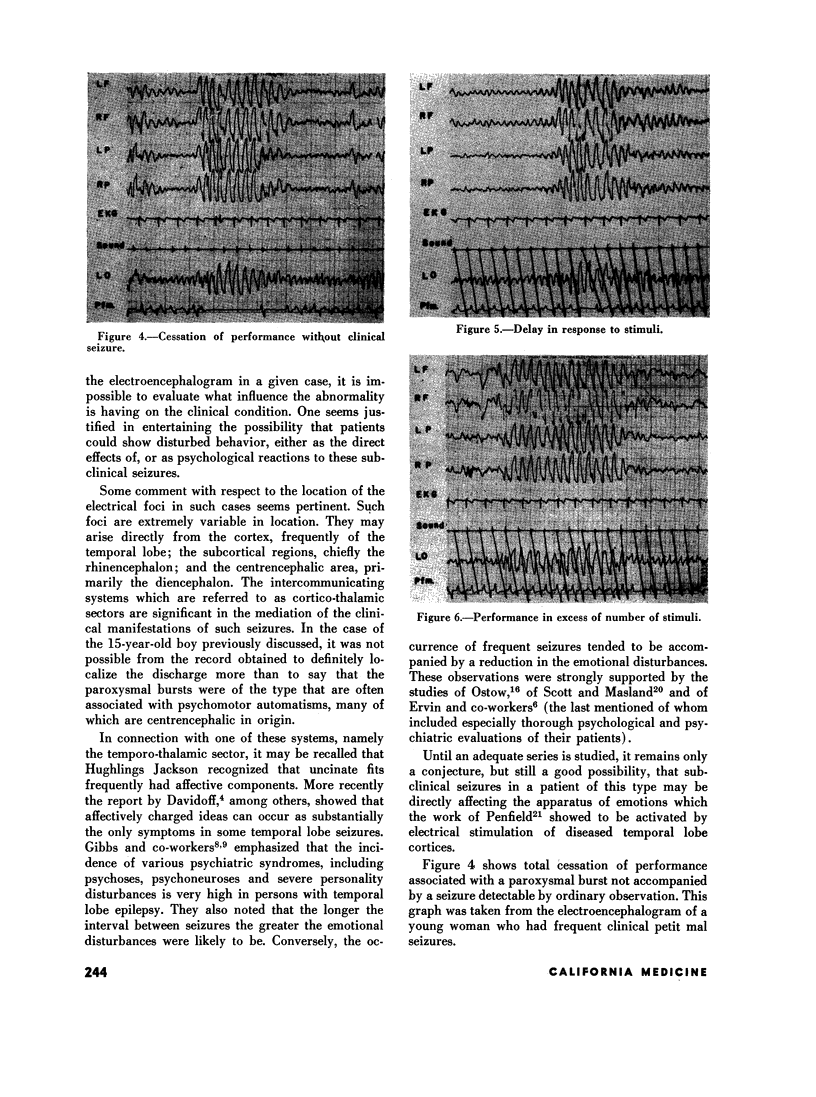
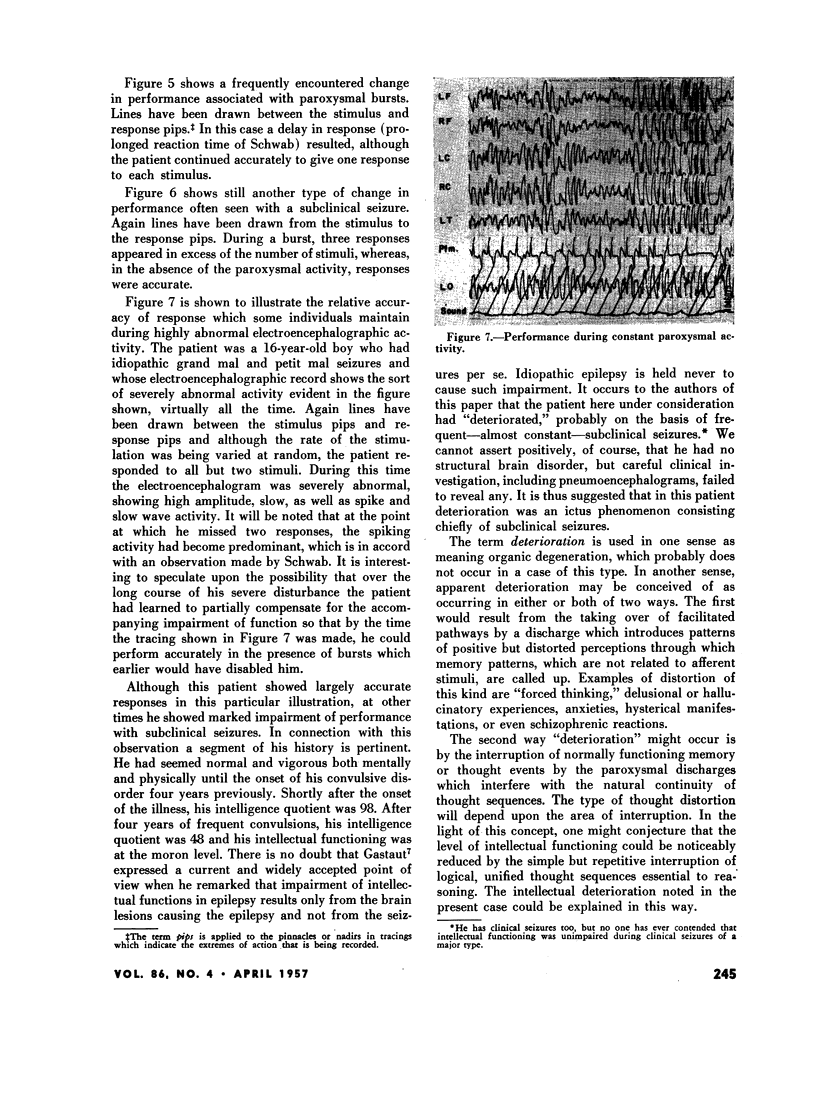
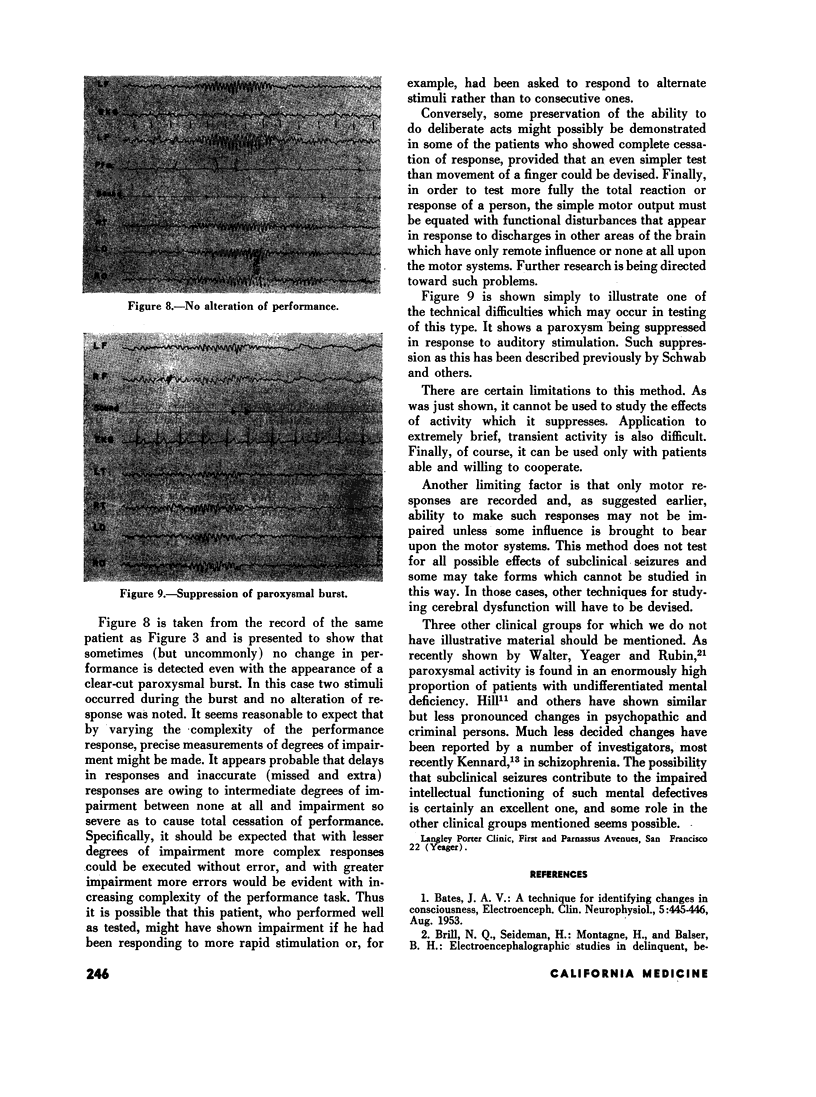
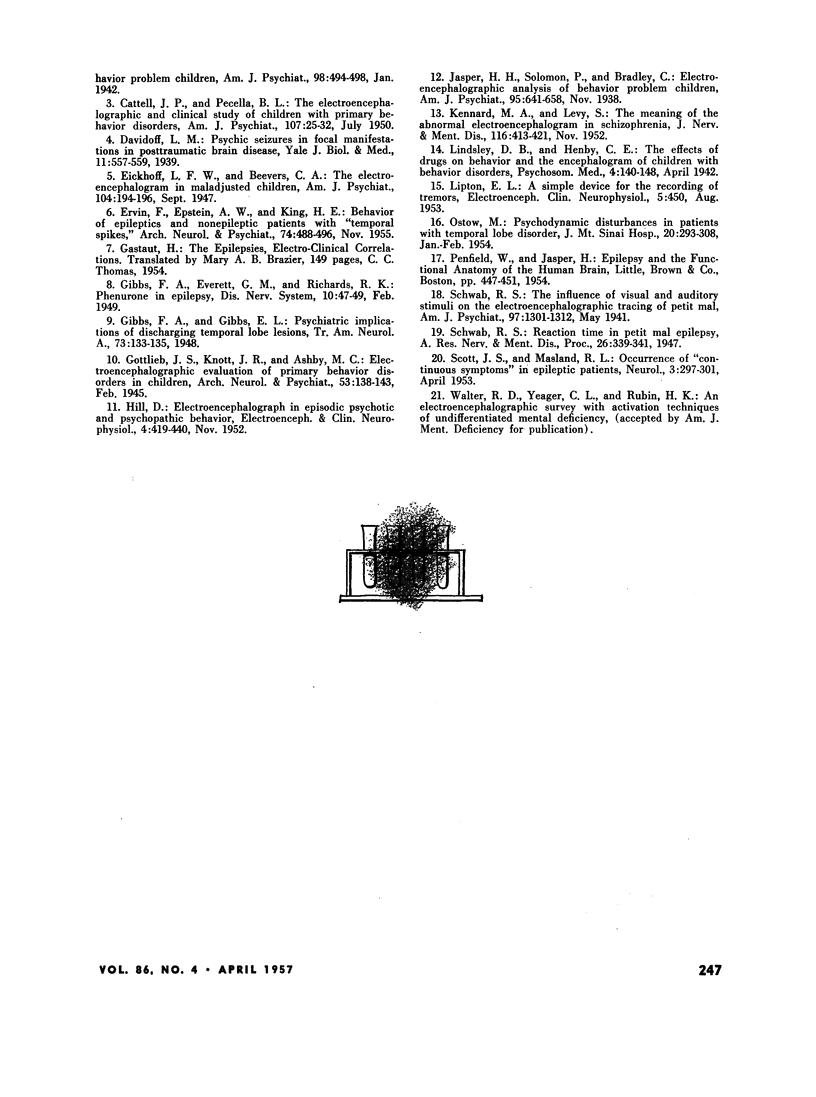
Images in this article
Selected References
These references are in PubMed. This may not be the complete list of references from this article.
- HILL D. EEG in episodic psychotic and psychopathic behaviour; a classification of data. Electroencephalogr Clin Neurophysiol. 1952 Nov;4(4):419–442. doi: 10.1016/0013-4694(52)90074-6. [DOI] [PubMed] [Google Scholar]
- KENNARD M. A., LEVY S. The meaning of the abnormal electro-encephalogram in schizophrenia. J Nerv Ment Dis. 1952 Nov;116(5):413–425. doi: 10.1097/00005053-195211000-00003. [DOI] [PubMed] [Google Scholar]
- LIPTON E. L. A simple device for the recording of tremors. Electroencephalogr Clin Neurophysiol. 1953 Aug;5(3):450–450. doi: 10.1016/0013-4694(53)90090-x. [DOI] [PubMed] [Google Scholar]
- OSTOW M. Psychodynamic disturbances in patients with temporal lobe disorder. J Mt Sinai Hosp N Y. 1954 Jan-Feb;20(5):293–308. [PubMed] [Google Scholar]
- SCOTT J. S., MASLAND R. L. Occurrence of continuous symptoms in epilepsy patients. Neurology. 1953 Apr;3(4):297–301. doi: 10.1212/wnl.3.4.297. [DOI] [PubMed] [Google Scholar]











